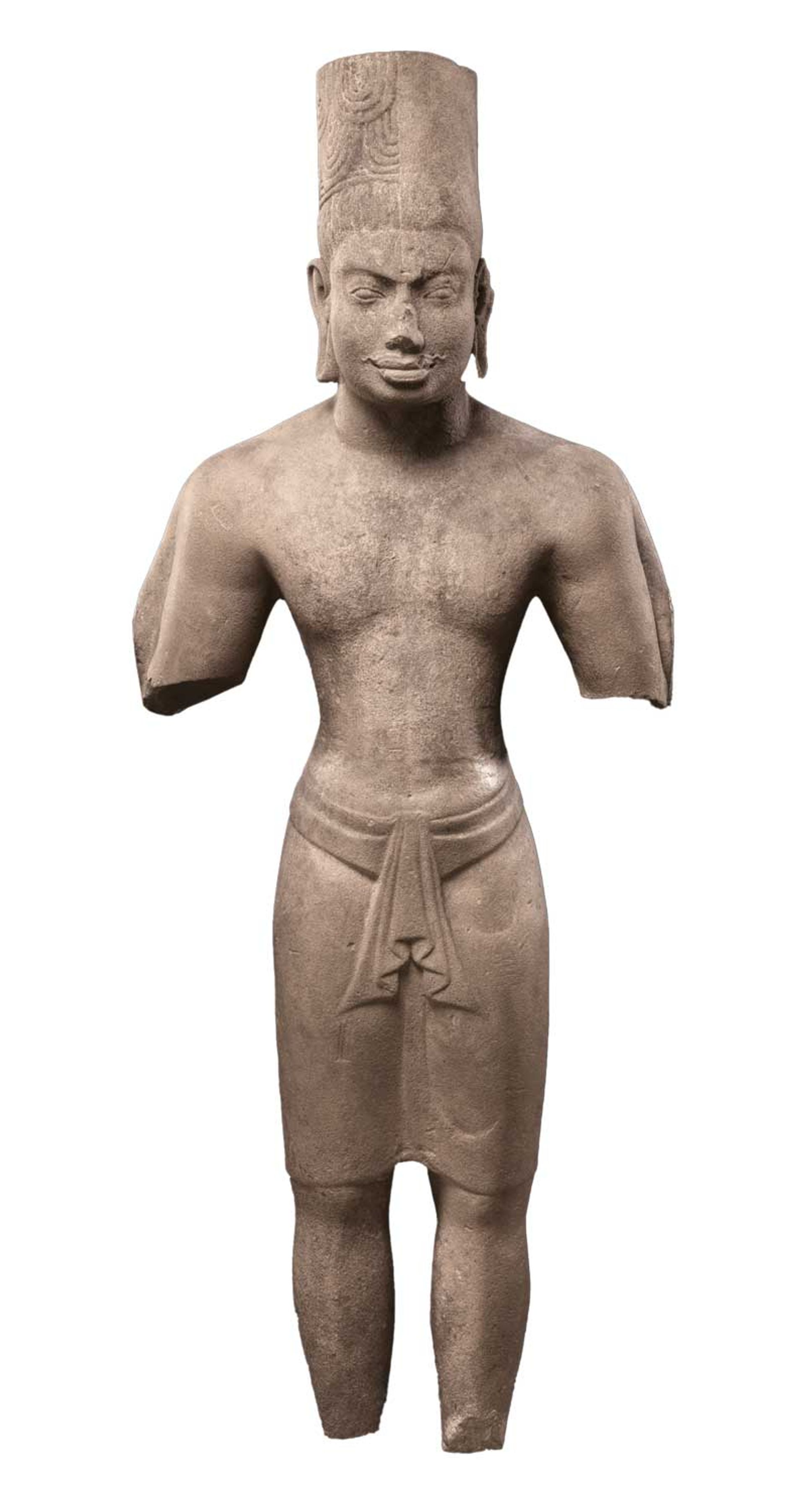Conversations around the repatriation and return of stolen works of art to their country of origin have finally become mainstream. But it’s still relatively rare to hear from outside of the industry about people recently involved in the illegal antiques trade. The new podcast Doug Dynamite recounts how Douglas Latchford and his collaborator Emma Bunker illegally removed hundreds of sculptures from Cambodia, often by falsifying provenance records and export licenses, to fill the galleries of Western museums. Latchford was charged with antiquities trafficking in New York in 2019 but died the following year.
The research isn’t new, but the method of storytelling is fresh enough to compel
The story of Doug Dynamite zips along. The host, Canadian actress Ellen Wong, does an excellent job of presenting the story of Latchford and his associates, with only the occasional predictable Indiana Jones joke. As an introduction to the illegal trade in antiques and art, Doug Dynamite is good. Its pace and accessibility will hopefully get listeners thinking about the objects they see in museums. The season is short, with just six 30-minute episodes, and I found myself waiting for a crescendo at times – the compactness makes the series easy to listen to, but the podcast format doesn’t allow for the kind of footnotes and deeper context from which a story like this would be beneficial.
Latchford was not alone
Latchford’s case is well known to those in the museum sector, but he is one of many dealers and collectors implicated in the modern colonialism of white-collar art crime. Doug Dynamite frequently describes Latchford’s treatment as the “pillage of an entire civilization”, and the sheer number of items that have passed through his hands is horrifying, but the series tends to cast Latchford as its main character to the point of absolving others of any liability.
There are a handful of references to other acts of looting – unnecessary comments that serve mainly to point out the scale of the theft in Cambodia, and slightly misleading claims that “unlike the Elgin Marbles and other controversies over stolen art, our story is not ancient history, it’s happening now”, as if there were no active looting across the world. These comments don’t really give a sense of the number of items looted from Western museums or private collections. Nor do they do justice to the messy international politics being played out in repatriation debates. What kind of give-and-take is happening behind the scenes here? Latchford was known to repatriate sculptures to distract from the scale of his crimes – what choices are made by institutions now returning works to Cambodia?
Then there is the sometimes naive, sometimes interested complicity of museum staff like Martin Lerner, who was praised in 1997 for spotting that one of the Khmer statues in the collection of the Metropolitan Museum of Art in New York corresponded to an image of the International Council. museums 100 Lost Objects: Looting at Angkor guide and bring him back to Cambodia. But Lerner was instrumental in whitewashing the provenances of the statues sold by Latchford, and their relationship continued into the 2010s.

A Harihara, a stone Cambodian deity in the Met’s collection, believed to have been looted by Latchford
Photo: public domain
The question of the extent to which museums are invested in and profit from the trade in stolen art could receive more attention. Why was the art world so willing to turn a blind eye, even when Latchford and Bunker regularly contradicted each other on where the statues came from? The Sotheby’s and Spink & Son auction houses that sold these looted works were presented with ample evidence of looting, both through the sketchy provenances and physical condition of the statues they sold. They weren’t brilliant criminal masterminds: they were empowered.
Although research in Doug Dynamite is not new, this method of narration is still fresh enough to impose itself. Following the popularity of the podcast Stuff the British Stole– which started in 2020 and takes a different approach, focusing on an object or collection in each episode – it only makes sense that we see more colonial flight podcasts and hopefully a wider audience for them. activists and researchers driving the repatriation. Doug DynamiteThe story is compelling, Wong’s narration is captivating, and the experts interviewed are excellent. It could be more, but I think we’re at the beginning of the genre rather than its peak. After all, there really isn’t a shortage of artistic crimes to cover.
